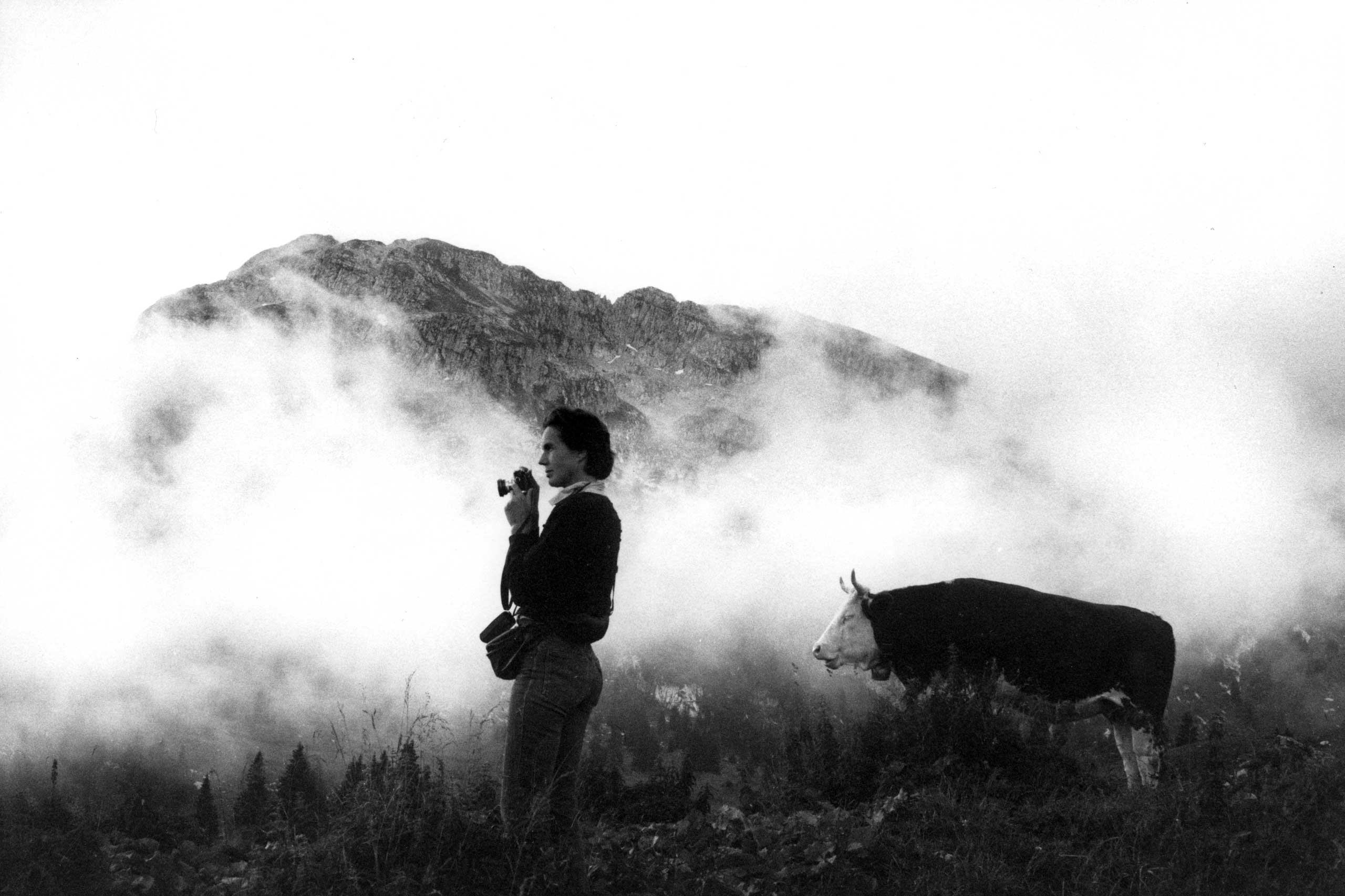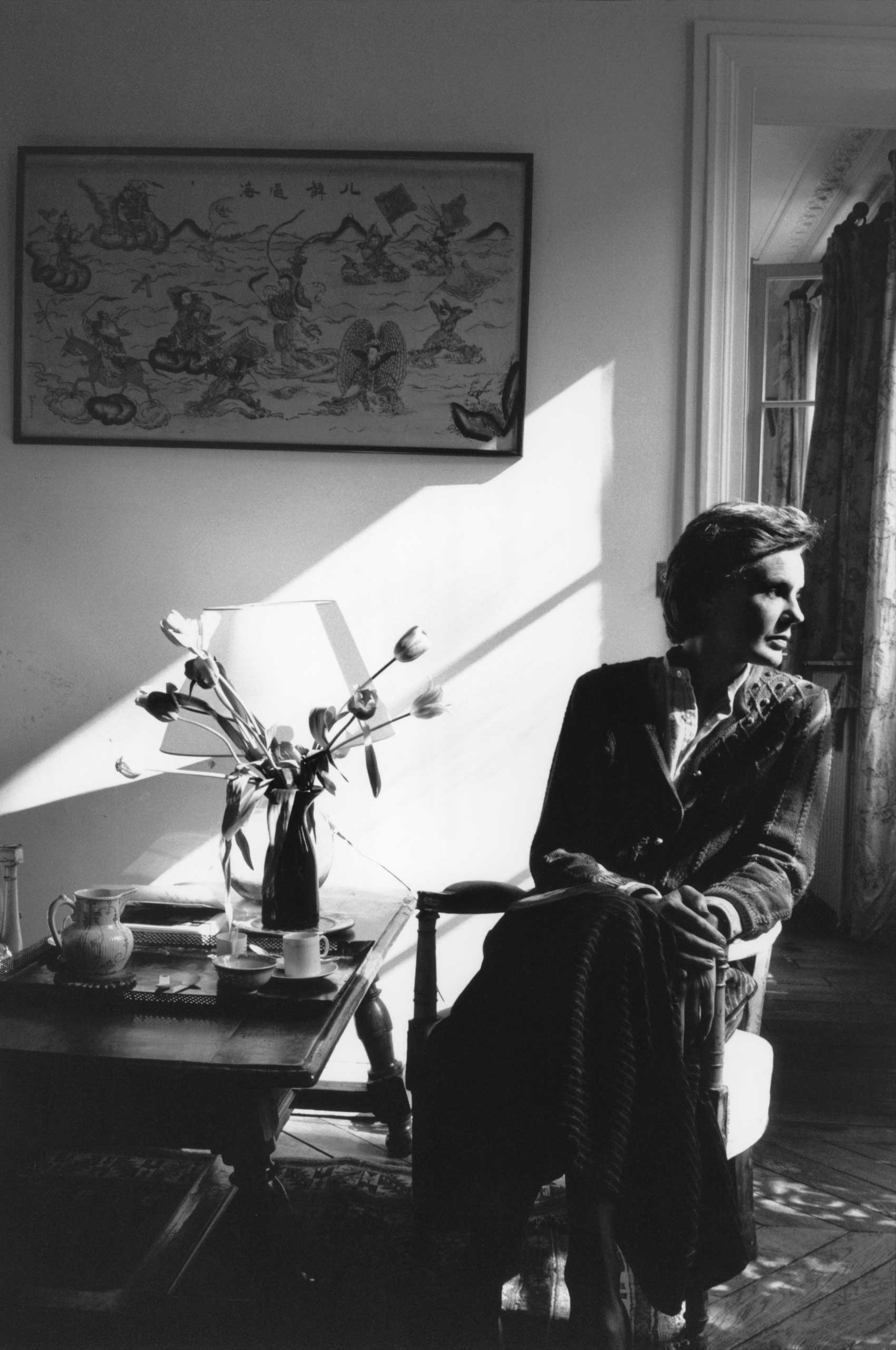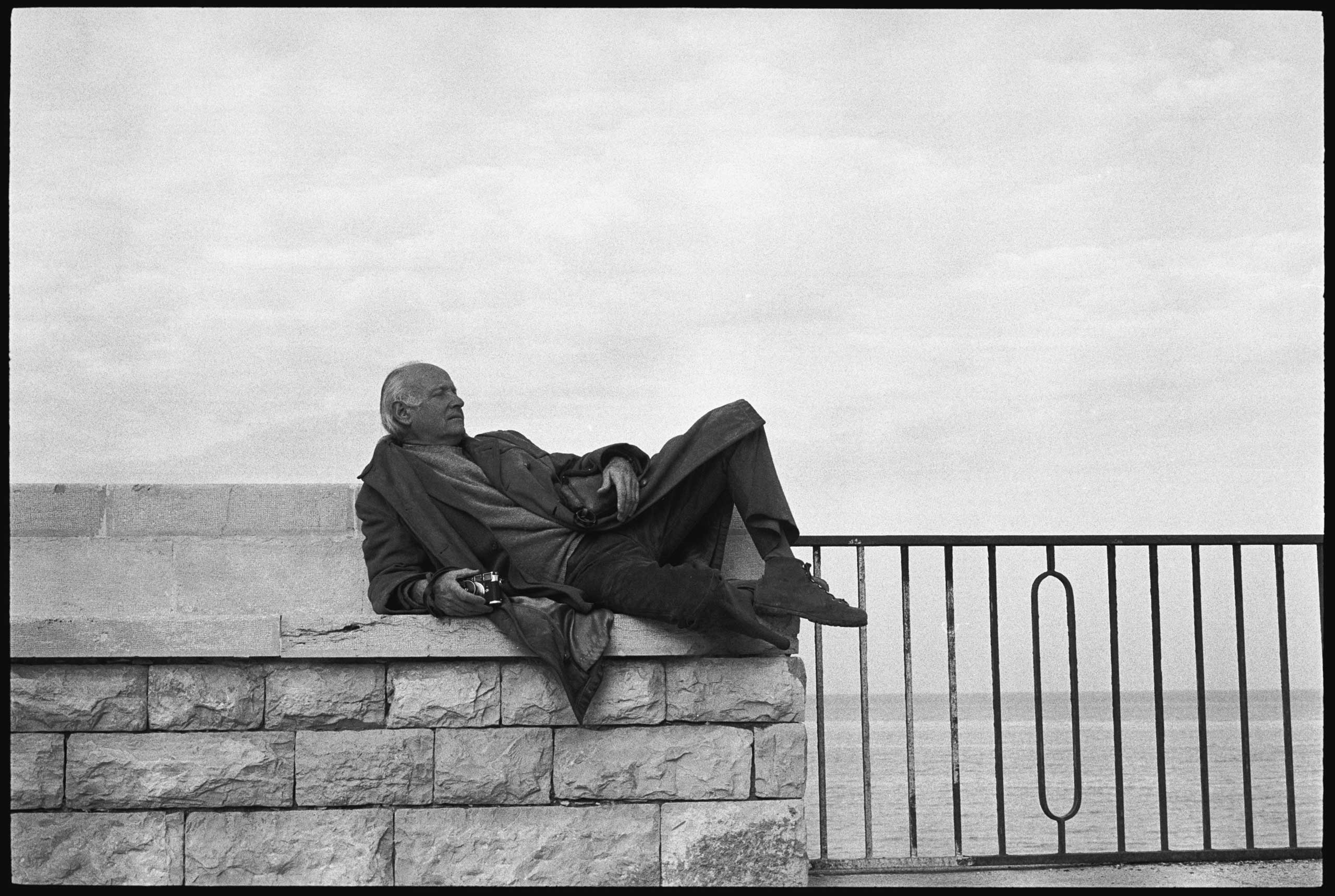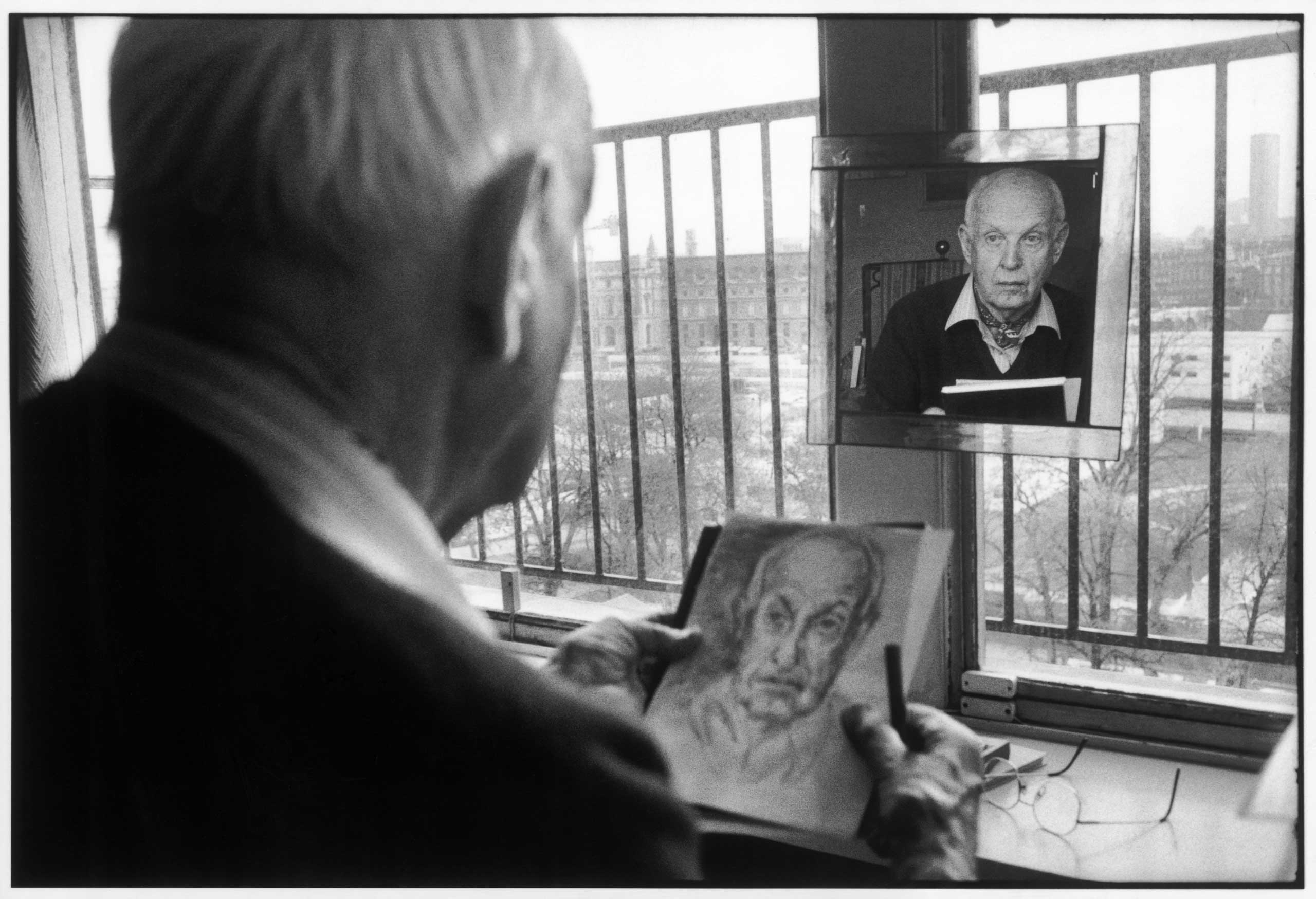Introduction
Photography as an art has generated many masters who have revolutionized this sphere and contributed their passion and talent to its development. One of such extraordinary artists is Henri Cartier-Bresson, a French photographer who launched a unique photographic cooperative called Magnum photos. The members of it were independent photographers who created works under the guidance of their exceptional vision, representing not only the content but also the perspective of seeing the world around them (Scott 2020; Smith 2004). The style and the captivating power of Cartier-Bresson’s works made him a renowned artist who was called “the eye of the 20th century” (Smith 2004, 313). Moreover, his tandem with his wife Martine Frank, who was a very talented professional photographer herself, yielded a body of influential photographs. However, within the large volume of photography works produced by Henri Cartier-Bresson and Martine Frank, there is a series of pieces made by the artists of each other.
These works are prominent due to their power of transmitting not only the highly professional visual appeal but also the strengths of the emotional bond between the two photographers. The feelings toward each other and the romantic relationships in marriage between Cartier-Bresson and Frank have been a subject of discussion of several journalists and scholars (Conway 2014; Weber 2018). When looking at the portraits of the two artists that they made of each other, one cannot resist the feeling of seeing these people through the lens of love (Conway 2014). Indeed, one observes the beauty of a strong spiritual connection between the two, which is reflected in the emotionally charged images. The feeling of love is transmitted through all of the photos of this series and is emphasized through the themes of intimacy, femininity, admiration, and stillness of precious everyday moments a married couple experiences. Nonetheless, it is the combination of the photographers’ professionalism, unique vision, and the depth of emotional connection that produce such powerful images, which convey philosophical implications of the unity between the visual part and the meaning.
Given the significant artistic and philosophical appeal of the compilation of photographs of each other made by Cartier Bresson and his wife during their relationship and marriage, it is relevant to research them. The integration of Cartier-Bresson’s (1952) theory of the decisive moment in photography, Barth’s (1981) punctum and studium implications, Eco’s (1982) semiotics and multiple codes, and Berger’s (1972) ways of seeing will help analyze the compilation. This essay is designed to argue that the unique emotional and philosophical appeal of the artistic works of Cartier-Bresson and Frank as a couple is manifested through the merge of their styles. The casual and, at the same time, special images captured by a couple of each other transmit the power of their feelings and are filled with the memories of the happy everyday moments together. In this essay, four photographs (two taken by each of the photographers of their spouse) will be analyzed from the perspectives of their visual representation and the role of the context in the delivery of the implicit emotional and philosophical meanings.
Theoretical Background
For the purposes of the analysis, four photographs made between 1971 and 1992 were selected among the many examples of the outstanding work by both Henri Cartier-Bresson and Martine Franck. The visual and contextual analysis of these works should be conducted using a well-defined conceptual framework, the implications of which would help explain the reason why the compilation is so special and emotionally charged. The theoretical background upon which the analysis and discussion of the contextual implications of the photographs made by Cartier-Bresson and Frank will be conducted is constituted of four ground-breaking works by renowned art thinkers. The conceptual framework of the essay is informed by the complexity of the implications embodied in the images as the constructs of meaning.
Multiple philosophers of art and thinkers have addressed the issues of the unity of the elements in visual representation and the particularities of perception triggered in viewers. In particular, the central role of the ideas of punctum and studium proposed by Barthes (1981) provides valuable background for the analysis of the photographs. Barthes (1981) identifies two central concepts that pertain to the perception of photographs. Firstly, studium is the interest in studying a photograph and unveiling its meanings. Photographs ignite a “general interest, one that is even stirred sometimes, but in regard to them my emotion requires the rational intermediary of an ethical and political culture” (Barthes 1981, 26). In such a manner, when seeing a photograph, one experiences emotion and wants to find a rational explanation of the relationship between vision and emotional experience.
Consequently, studium is particularly connected with punctum, which implies the emotional state induced by a photograph. Indeed, according to the author, “the photographs I am speaking of are in effect punctuated, sometimes even speckled with these sensitive points; precisely, these marks, these wounds are so many points” (Barthes 1981, 26-27). The punctum, therefore, denotes the traumatic or deep sensual experience that a viewer is exposed to as a result of seeing and studying (through studium) an image. Moreover, “a photograph’s punctum is that accident which pricks me (but also bruises me, is poignant to me)” (Barthes 1981, 27). The discussion of punctum and studium within the context of Cartier-Bresson’s and Franck’s works helps to analyze the influence of marital relationships between the photographers that predetermined the sincerity and emotional power of their images.
Within the framework of the unity between studium and punctum, the ideas of Cartier-Bresson (1952) might also be addressed. Indeed, in his seminal work entitled The Decisive Moment, Cartier-Bresson (1952) emphasizes such photography elements as the picture story, the subject, composition, color, and technique. When all these elements emerge successfully in one decisive moment when a photographer looks into the view finder, a truly powerful work of art is created (Cartier-Bresson 1952). Importantly, the photographer stated that “the picture-story involves a joint operation of the brain, the eye and the heart” (Cartier-Bresson 1952, p. 3). Thus, it is the job of a photographer to ensure this joint operation so that “to depict the content of some event which is in the process of unfolding and to communicate impressions” (Cartier-Bresson 1952, p. 3). In such a manner, the integration of studium and punctum in the context of photography analysis is informed by the intentions in photographers’ actions at the stage of creation. When discussing studium, one might appeal to the cognitive processes and perception particularities that find their place in photography. Indeed, Umberto Eco’s (1982) ideas on the codes embodied in images help integrate the appeal to investigate the photographs by discussing their implied meanings. In particular, Eco (1982) sees images as complex phenomenon denoting reality through a system of codes. Such codes as the code of recognition, transmission, tone and sensibility, rhetoric, and stylistic allow for differentiating between the different messages sent by an image to the audience. Similarly, Berger (1972) emphasizes that visual art as a medium of transferring meanings and emotions should be perceived in the context, which predetermines the perspective of studying and perceiving an image.
Through such studium-level elements as composition, perspective, and color, the photographer can further induce emotional responses through the codes to tell a story in all its completeness. These considerations reinforce the idea that context plays a significant role in interpreting the implicit meanings through photography. The context, which in this particular case constitutes the marital ties between the two people, is encoded in the codes of transmission, sensibility, unique style, and recognition. The compilation of these elements pertains to the punctum and triggers a specific emotional response in the viewers, which ultimately makes the photographs so unique and special.
Moreover, the ideas of punctum and studium allow for considering the context in which a photograph is taken as a pivotal element in the achievement of the ultimate goal pursued by a photographer. Barthes (1982) presents philosophical insights on the influence of knowing that one is being photographed on the ability to represent the true identity through a camera. For Cartier-Bresson and his wife, the openness between them allowed for eliminating the discomfort associated with being photographed, which helped them reflect love in the pictures of each other in its truthfulness (Smith 2004). According to Barthes (1982), the feeling of tension that one feels in front of a camera pointed at them hinders the sincerity of the captured moment and of the figure portrayed. Through these culturally imposed photographic rituals of artificial posing, it is particularly difficult to spot that decisive moment and convey the truth through the image (Barthes 1982). As for Cartier-Bresson and Franck, their professionalism and the high level of trust and openness between each other eliminated the artificial burden and allowed them to represent their feelings in their pure form.
Henri Cartier-Bresson’s “Martine Franck in Switzerland in 1984”
Visual Representation
This photograph is an image in which Cartier-Bresson captured the image of his wife Martine Franck on the background of Swiss landscapes with mountains in fog and clouds. The visual representation of the image contains an array of multifaceted characteristics that are typical for Cartier-Bresson’s works, including black-and-white color, meticulous composition, and attention to form. In the picture, Martine and a cow are facing the left side of the image representing the unity of both figures on the background of the misty mountains. Being an excellent example of exterior photography made by Cartier-Bresson, this picture conveys a story entailing the creative process, a common trip, and the role of Cartier-Bresson as a loving observer of his talented and beautiful wife. Using the codes of transmission, the photographer conveys the emotional strengths and the feelings of love and admiration. Lean forms of the mountain in the background and the two figures at the front of the picture are intertwined and complement each other. Using a unique composition and the conceptual representation of the woman as a part of the natural landscape unfold the level of understanding between the spouses. In particular, Cartier-Bresson’s sympathy with his wife’s passion toward photography in the outskirts of towns and the natural locations helps deliver the depth of their love.

Contextual Implications
When analyzing the content of this photograph, one might notice that it is an unusual example of a work in Cartier-Bresson’s portfolio. According to Conway (2014), Henri Cartier-Bresson “loved the streets, the vibrancy of the everyday” (para. 3). Indeed, he was one of the pioneers of street photography, depicting primarily urban life (Scott 2020). However, the photograph entitled “Martine Franck in Switzerland in 1984” demonstrates a completely different setting; it is a mountainous landscape in the outskirts of Switzerland, which so genuinely pictures Martine Franck in the location, which is more characteristic to her style of work. Indeed, as identified by Conway (2014), Frank “liked working on the fringe — photographing communities on isolated Irish islands” (para. 3). Therefore, on the example of this photograph, one can observe how the styles of these two photographers merge in an attempt to convey their mutual feelings toward each other and their understanding of each other’s passion for work. Moreover, it helped Cartier-Bresson represent his wife’s personality as an artist and as a woman through capturing her in the setting so sincerely relevant to her artistic identity.
Henri Cartier-Bresson’s “Martine Franck in 1986”
Visual Representation
This interior photograph of Martine Franck in 1986 is an image of Cartier-Bresson’s wife in a room sitting in a chair beside a wooden table facing the window on the right. The photographer looks at the woman’s figure in stillness with the playfulness of light and shadows on her face, body, and background. The woman is relaxed; she leans toward the back of the chair and reluctantly looks away outside the window as if deep in contemplation. Such a posture implies trust toward the photographer, in the presence of whom Franck can sink into her deepest thoughts. The composition of the work plays an important role in delivering the feelings of trust and the photographer’s admiration for the woman. Indeed, the intimacy of the setting, the playfulness of lights and shadows capture a valuable, memorable moment. The sincerity of the emotions transmitted onto viewers and the truthfulness of the everyday moment in the life of the couple are obtained by the details. They include the cups and teapot on the table, a vase, and the overall interior of the room, which appears to be their home.

Contextual Implications
When analyzed in the context, this picture gains a more in-depth meaning as an example of a picture that tells a story about love and affection. The intimacy of the moment, the captured relaxed posture, and the interaction of light and shadow, straight lines, and a lean figure come into a joint operation between the eye, brain, and heart (Cartier-Bresson 1952). The eye sees a woman in a conventional setting; the brain perceives the image from the perspective of the photographer, identifying every detail. Ultimately, the heart or the emotional perception of the obtained visual information triggers a response in connection with the encoded messages. The photographer’s intention to show his wife through the lens of his vision is manifested through the code of recognition, which appeals to the viewers who have experienced such tranquil moments of intimacy in marriage (Eco 1982). Also, the code of sensitivity is transmitted through the woman’s posture and the amount of light and shadows in the picture, which contributes to the punctum or sensible experience.
Martine Franck’s “Henri Cartier-Bresson in Italy in 1971”
Visual Representation
This photograph is a beautiful example of the compilation of analyzed images. As an exterior photograph, this piece illustrates a man lying on the brick wall in the background of a sea. The man looks away from the camera; his pose reminds him of the poses in classical Italian paintings of aristocrats, which conveys slight irony. The interplay of vertical lines in the hedge and the horizontal line in the brick walls add texture and geometrical structure to the image. The figure of the man protrudes on such a linear background, attracting viewers’ eye to him as a central figure.

Contextual Implications
The contextual analysis of this image allows for proving the argument about the merge of the two photographers’ styles in their works capturing each other with a camera. Indeed, in the composition of the photograph, one can observe a significant role devoted to geometrical figures, lines, and forms, which have always been particularly characteristic of Cartier-Bresson’s style of photography (Scott 2020). However, since it’s a work by Franck (1971), the use of the lines and geometry in such a large quantity explains the artist’s intention to integrate the artistic identity of Cartier-Bresson in the way he is portrayed in the picture. In such a manner, he becomes a part of his own visual world, which emphasizes that his wife was aware of it. Her intention to capture this element demonstrates her feeling of love, appreciation, and admiration for her husband.
The pose in which the Cartier-Bresson is shown in the picture is not typical for his intuitive photography, which shows the impact of Franck’s vision. However, the fact of posing aligns with Barthes’ (1982) ideas about the rituals, which do not seem to deteriorate the sincerity of the moment in this photograph. The staged positioning in this piece of art might be viewed as a representation of playfulness and intentionality, which illustrates the type of relationships between the spouses.
Martine Franck’s “Henri Cartier-Bresson in Paris, 1992”

Visual Representation
This photograph depicts Cartier-Bresson at work on his autoportrait. He is sitting in front of the window with lines of metal bars, looking at his reflection in the mirror. The complexity of composition based on the reflection in the mirror and the back view of Cartier-Bresson helps Franck integrate both her vision of the husband and his own vision of himself in a single image. The geometrical lines on the background echo the style of Cartier-Bresson and contribute to the depiction of his wife’s admiration with his personality and work. The intimacy of the captured moment is emphasized by the open look of Cartier at his reflection and in the camera at the same time. Such a detail contributes to the idea of openness, love, and intimacy between Cartier-Bresson and Martine Franck.
Contextual Implications
The content and emotional appeal of this image are influenced by the vision of the artist by his wife. For the purposes of additional context, one might refer to the words by Weber (2018), who witnessed Franck call Cartier-Bresson a person with a “hard tooth,” implying his “tough and fair” personality (p. 155). She also was noticed to give her advice and comments on Cartier-Bresson’s work, which implies her particular involvement in his creative process.
Therefore, when viewing this picture from the contextual perspective, it is evident that the glimpse of the so-called ‘behind-the-scenes’ moment in the working process observed by Franck represents her admiration for his creation. Moreover, the picture transmits the code of recognition and the code of iconic figures. Since this picture was taken in 1992, when Cartier-Bresson was long a renowned master in his field, the photograph bears a loaded cultural meaning. Moreover, the ease with which the man poses for the photograph contributes to the casual air of it and increases the truthfulness and emotional appeal of the content (Barthes 1981). Thus, this picture is a vivid example of the one taken at a decisive moment and delivering a story through codes and punctum
Contextual Analysis of the Compilation of Photographs
Now that each photograph has been described and analyzed separately, it is relevant to integrate the findings into one coherent view on the set of photographs as a single unit of art. In this regard, it is essential to identify the apparent similarity and assimilation of their styles manifested in the elements of visual art. It helps to unfold the general influence of the context of their loving relationships and passion to the profession of photography that so significantly contributed to the power of images. As stated by Conway (2014), “it is through their elegant, often intimate, portraits of each other that we gain insight into a significant part of their relationship” (para. 4). Thus, love, admiration, and mutual passion toward each other and their craft constitute a contextual background for the analyzed works of art.
When viewing the compilation of the couple’s photographs through the perspective of Umberto Eco’s (1982) system of codes, one might identify the collision of several pivotal encoded meanings in the photographs. These codes include the codes of transmission, which imply the desire of the artist to convey their feelings through the visual representation and transmit their feelings. In addition, the iconic codes in general, and figures in particular, play an important role in the rendition of the emotional load of the photographs. Indeed, in all of the four analyzed photographs, the photographers appear as they are, renowned artists and influential figures whose life and work are popular. In such a manner, the photographs gain a larger cultural significance due to the encoded implications of the power of iconic figures depicted in them.
As stated by Cartier-Bresson (1952), it is a rare occasion when a photograph tells a story that radiates beyond the image itself. It reaches the viewer at multiple levels, including visual perception, cognitive processing of the image, and the emotional response to it. While it is an infrequent situation when a photograph contains a complete multitude of elements to strike a viewer at all three levels, when it happens, a decisive moment occurs (Cartier-Bresson 1952). When applying these considerations to the analyzed photographs in their unity, it is evident that these pictures tell a compelling story of marriage, love, affection, and admiration, which make them so special.
Moreover, as the photographs demonstrate, the partners’ ease and willingness to pose for the photographs, despite the seeming unintentionality of some of the pictures, amplifies the power of their connection. Indeed, following the prmises of Barthes’ (1982) ideas on photographic rituals, Cartier-Bresson and Franck use staging and posing to capture sincere and deer moments as a memory of simple joys of their mutual experiences and everyday life. They are not intimidated by the camera because they trust each other. Moreover, it is their deep loving connection, admiration as lovers and colleagues that contributes to the captivating emotional power of these photographs.
Conclusion
In summation, the analysis of the photographs taken by Cartier-Bresson and his wife allows for proving the assertion that their styles merged into one as they intended to convey each other’s personalities through visual means. The portrayal of Franck on the background of mountainous landscape unusual for Cartier-Bresson’s work and the use of geometrical lines in Franck’s photographs of Cartier-Bresson helped them unfold artistic identities of each other. The truthfulness and sincerity of the everyday intimate moments captured in the images were obtained by means of their complete integration with each other without any feelings of inconvenience in the presence of a camera. Encoding transmission of universal feelings of love, beauty, admiration, and appreciation, using the codes of iconic figures and perception, the photographers cultivated strong punctum, or emotional appeal of their works to capture the decisive moments.
Works Cited
Barthes, Roland. 1981. Camera Lucida: Reflections of Photography. New York: Farrar, Straus and Giroux.
Berger, John. 1972. Ways of Seeing. London: Penguin Books.
Cartier-Bresson, Henri. 1952. The Decisive Moment. New York: Simon and Schuster.
Cartier-Bresson, Henri. 1984. “Martine Franck in Switzerland in 1984.” Web.
Cartier-Bresson, Henri. 1986. “Martine Franck in 1986.” Web.
Conway, Richard. 2014. “Henri Cartier-Bresson and Martine Franck: Love Through a Lens.” Time, Web.
Eco, Umberto. 1982. “Critique of the Image.” In Thinking Photography, edited by Victor Burgin, 32-38, London: Macmillan.
Franck, Martine. 1971. “Henri Cartier-Bresson in Italy in 1971.” Web.
Franck, Martine. 1992. “Henri Cartier-Bresson in Paris, 1992.” Web.
Scott, Clive. 2020. Street Photography: From Brassai to Cartier-Bresson. New York: Routledge.
Smith, G. 2004. “Henri Cartier-Bresson 1908–2004.” History of Photography, 28 (4): 313–314.
Weber, Nicholas Fox. 2018. “Henri Cartier-Bresson at Age Ninety-Four: Turning the Lens Inward.” American Imago 75 (2): 153-178.